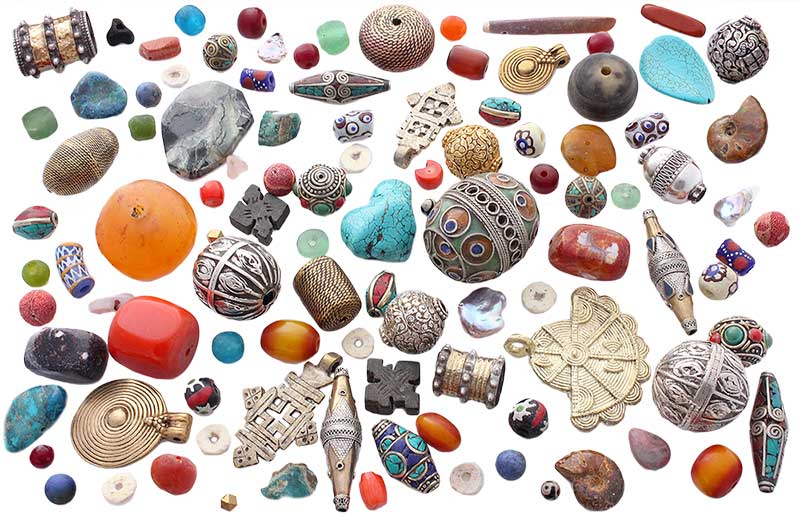I almost got fooled when I first saw the glittering gold rock. The Christmas craft market didn’t seem like the type of venue where they’d be selling hunks of gold. The stall vendor read the perplexed expression on my face and politely interrupted my thoughts, “It’s Fool’s Gold, madam”.
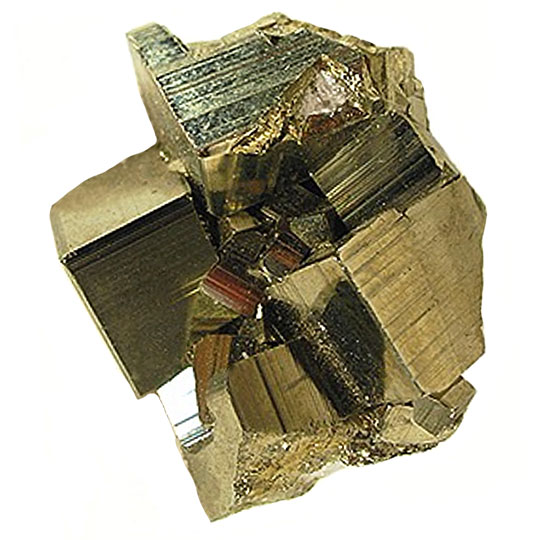
Now I was even more confused… “But it isn’t April Fools’ Day” I blurted out.
The vendor chuckled lightly and proceeded to explain that the beautiful specimen I was looking at was called Pyrite, AKA “Fool’s Gold”.
That incident was many years ago when I was a student; I’ve since wised-up quite a bit!
Being April Fools’ Day, it seems like the perfect day to discover more about this fascinating mineral.
But first, let’s briefly explore how this light-hearted day came to be.
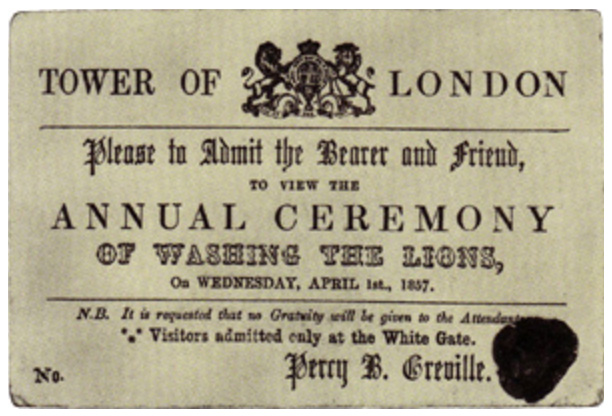
A ticket to “Washing the Lions” in London from 1857, a traditional April Fool’s prank.
The origin of April Fools’ Day
There’s no definitive source about how it started, but one of the most popular legends relates to the shift in New Year’s Day.
In medieval Europe the new year began on March 25 under the Julian calendar. Since this fell during the Holy Week, new year’s celebrations commenced on April 1 – the same day that ancient cultures including the Romans and Hindus celebrated New Year’s Day.
However, this was replaced by the Gregorian Calendar in the 16th Century, which moved New Year’s Day to January 1.
In France, people who were late to adopt the new date and continued to celebrate New Year’s Day on April 1 were called fools and become the subject of pranks. They were often referred to as “Poisson d’Avril” (April fish), insinuating that they were easily caught, and almost every trick involved a fish.
Many people still play practical jokes or hoaxes on this day, which makes it particularly interesting to investigate the appearance versus reality of “Fool’s Gold”.
What is Fool’s Gold?
Fool’s Gold is Iron Pyrite, a mineral composed of iron and sulphur. It is harder than gold and although it has a brassy yellow colour and a metallic lustre, it is not as bright yellow as gold. In fact, it often leaves a greenish black streak while gold leaves a yellow streak. Gold is much softer and will bend or dent easily and can be tarnished with a sharp instrument, whereas pyrite is brittle and will break rather than bend, but can’t be easily scratched. These tell tale differences make it easy to distinguish the two.
However, it turns out that I was not the only one that was fooled by its similarity in appearance to gold.
Throughout history, novice miners would frequently mistake pyrite for real gold. In 1849, California’s population exploded as a result of the California Gold Rush, however most people never struck real gold as they only found pyrite.
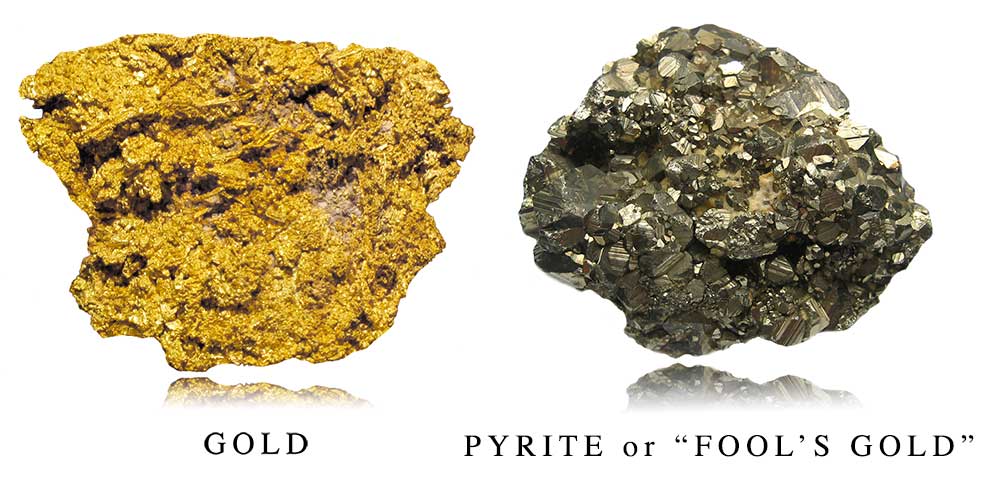
Interesting Trivia, Uses and Legends
Pyrite derives its name from the Greek word for fire (pyr or pyros) because it gives off sparks when struck against metal or stone, and was therefore used as a means to create fire. It was also used in firearms at one time but this function is now obsolete.
It’s often a good way to find gold as the two form under similar conditions. In fact, gold can occur inside pyrite and substitute the iron atoms in pyrite’s structure; however, it’s usually not significant enough to make pyrite as valuable as pure gold.
Interestingly, the gold coloured flecks you see in Lapis Lazuli is pyrite. When scattered subtly throughout the stone, it gives Lapis Lazuli an almost magical quality that enhances its beauty. Too much pyrite on the other hand may cause the stone to have a dull greenish tint.
Significant deposits have been found in Peru, Chile, Britain, Spain, Italy and North America.
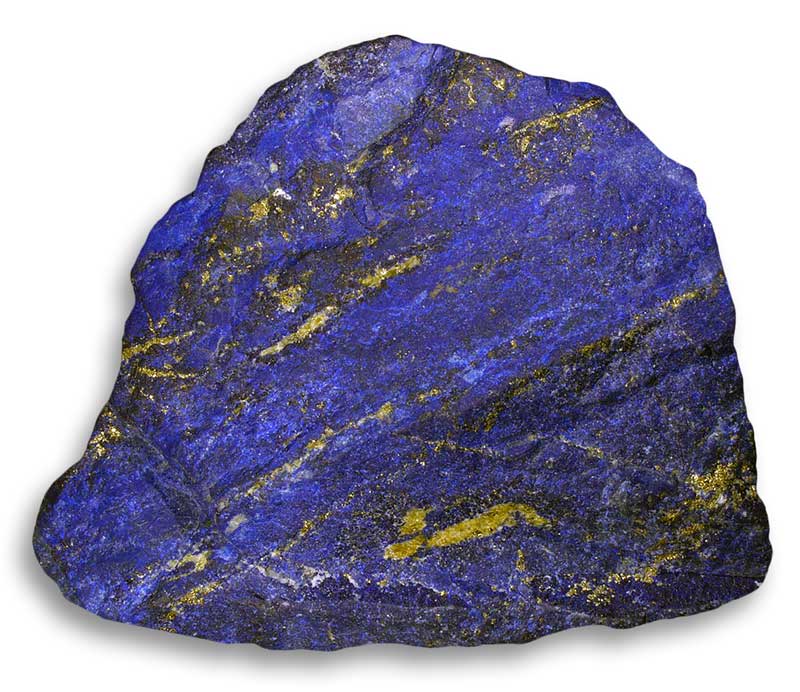
In antiquity, the Incas of Peru as well as the Aztecs of southern Mexico were known to polish large slabs of pyrite and use its shiny surface to gaze into like a mirror, and also to predict the future. In addition, Pyrite crystals were considered stones of power and great magic, and were frequently used by North American Indian shamans in amulets and objects used during their healing rituals and incantations.
Pyrite reflects the energy of the colour gold – traditionally the colour of kings, riches, and the sun – and is said to bring success, enthusiasm, happiness, and power to its wearer.
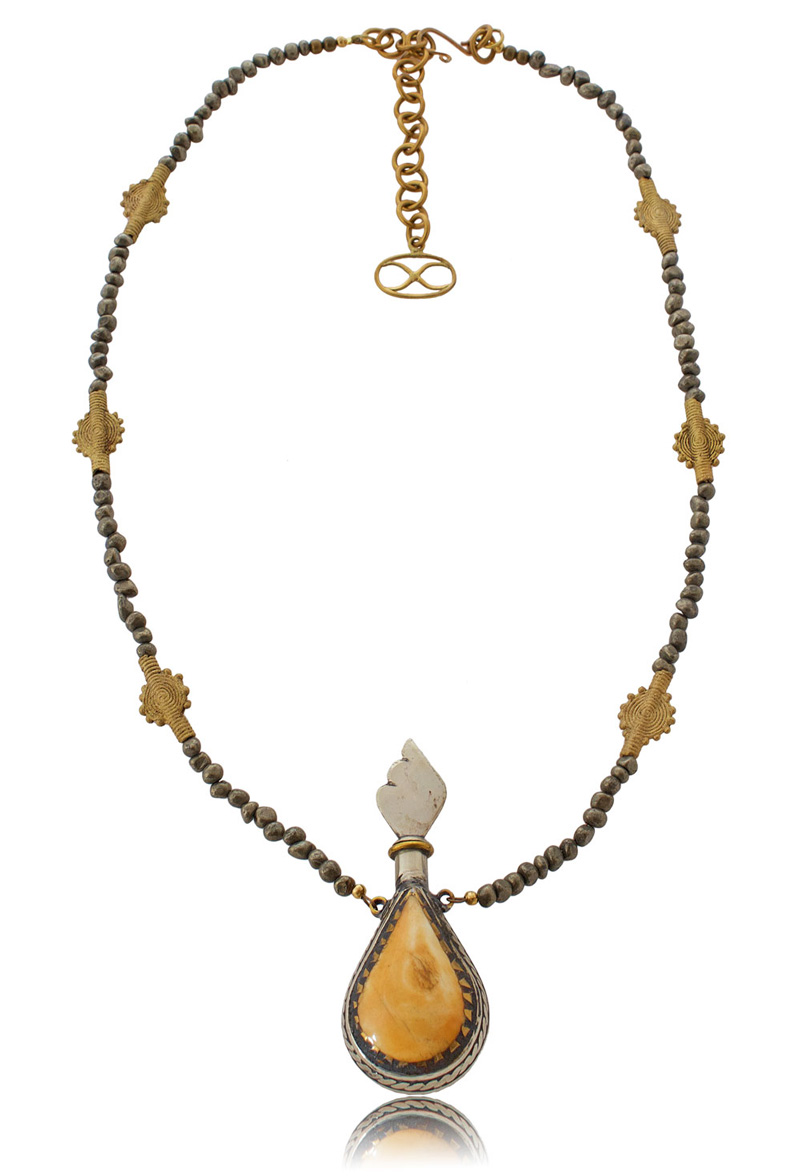
Why we like it
- Pyrite has a harder physical composition than gold, so it isn’t as fragile and bendable as real gold. However, the downside is that pyrite is brittle, so it can’t be used in all types of jewellery.
- Nonetheless, pyrite is significantly cheaper than gold, so it can be an excellent substitute in some instances that is easier on your pocket!
- Since it is a naturally occurring mineral, pyrite is eco-friendlier than manufactured alternatives to ethically sourced gold.
- Pyrite is fairly common, so there is a much lower depletion rate than that of gold.
Jewellery that incorporates this mineral proves that pyrite can be used to make beautiful items of adornment. The SHIKHAZURI Eurgain Necklace is a classic case in point. It features pyrite beads which complement the kohl holder pendant and adds to the alluring charm of this piece. Its understated metallic shine gives this necklace a beautiful richness and shows how versatile pyrite can be in jewellery.
Now that you know more about this wonderful stone, you can avoid being fooled into thinking that pyrite is gold, and have a happy April Fools’ Day!

